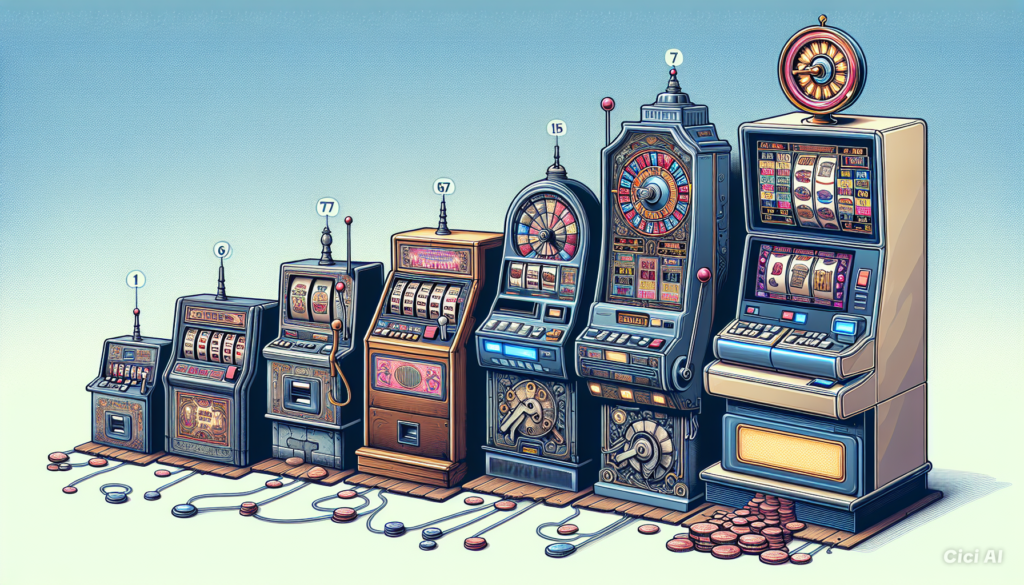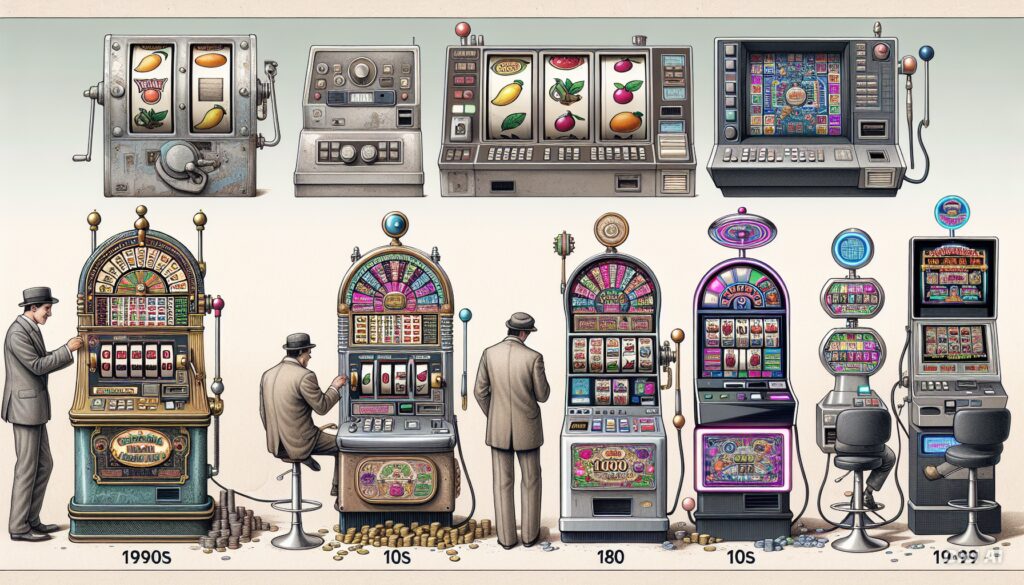Table of Contents
Slot machines have come a long way since their inception in the late 19th century. These beloved casino games have evolved from simple mechanical devices to complex digital platforms, transforming the gambling landscape and captivating players worldwide. Let’s delve into the fascinating journey of slot machines and explore how technology has shaped their development.

The Birth of the Mechanical Slot Machines
The first slot machine, known as the Liberty Bell, was invented by Charles Fey in 1895. This mechanical marvel featured three spinning reels adorned with symbols such as horseshoes, stars, and playing cards. The Liberty Bell quickly gained popularity, thanks to its simple yet thrilling gameplay. Players would insert a coin, pull a lever, and hope for the reels to align in a winning combination.
The Liberty Bell’s success paved the way for the mass production of mechanical slot machines. These early models relied on springs and gears to operate, creating an authentic and tactile gaming experience. The iconic lever, often referred to as the “one-armed bandit,” became synonymous with slot machines, adding a physical element of excitement to the game.
The Electromechanical Era
The 1960s marked a significant turning point in the evolution of slot machines with the introduction of electromechanical technology. Bally Technologies, a pioneering company in the gaming industry, developed the first electromechanical slot machine called Money Honey in 1963. This groundbreaking invention combined electrical components with mechanical parts, offering players new features such as automatic payouts and flashing lights.
The electromechanical era saw the emergence of multi-coin and multi-line slot machines, allowing players to increase their bets and potential winnings. The incorporation of electrical circuits enabled more complex game mechanics and the inclusion of bonus features, enhancing the overall gameplay experience. Slot machines became more visually appealing with the addition of colorful lights and engaging sound effects, attracting a broader audience to casinos.
The Digital Revolution
The 1970s and 1980s witnessed a technological revolution that would forever change the landscape of slot machines. The advent of microprocessors and computer technology led to the development of video slot machines. Fortune Coin Co. introduced the first video slot machine in 1976, which utilized a modified 19-inch Sony Trinitron color receiver for its display.
Video slot machines revolutionized the industry by offering a digital interface with virtual reels. This innovation allowed for greater flexibility in game design, enabling developers to create intricate themes, animations, and bonus rounds. Players could now enjoy immersive graphics and engaging storylines, enhancing the overall entertainment value of slot machines.
The transition to digital technology also brought about the introduction of random number generators (RNGs). RNGs replaced the mechanical and electromechanical systems, ensuring fair and unbiased outcomes for each spin. This advancement provided players with a sense of trust and transparency, further boosting the popularity of slot machines.
The Online Slot Machine Boom
The rise of the internet in the late 20th century opened up new possibilities for the gambling industry. Online casinos emerged, offering players the convenience of playing their favorite slot machines from the comfort of their homes. Software providers such as Microgaming and NetEnt spearheaded the development of online slot games, bringing the excitement of the casino to the digital realm.
Online slot machines introduced a plethora of innovative features, including progressive jackpots, interactive bonus games, and multiplayer functionality. Players could now compete for massive prizes, participate in tournaments, and enjoy social interactions with other players. The accessibility and variety of online slots attracted a global audience, propelling the industry’s growth to unprecedented heights.
The Mobile Revolution and Beyond
In recent years, the proliferation of smartphones and tablets has further transformed the slot machine landscape. Mobile gaming has become increasingly popular, allowing players to enjoy their favorite slots on the go. Mobile slot apps and optimized websites provide a seamless gaming experience, with touch controls and intuitive interfaces enhancing convenience and engagement.
Looking ahead, the future of slot machines holds exciting possibilities. Virtual reality (VR) and augmented reality (AR) technologies are poised to revolutionize the industry, offering immersive and interactive experiences like never before. Players will be able to step into virtual casinos, interact with lifelike environments, and engage with slot machines in entirely new ways.
Conclusion
The evolution of slot machine from mechanical to digital has been a remarkable journey. From the humble beginnings of the Liberty Bell to the cutting-edge technologies of today, slot machines have continuously adapted to meet the demands of players. The fusion of innovation, entertainment, and technology has transformed slot machines into captivating and immersive gaming experiences, ensuring their enduring popularity for generations to come.

